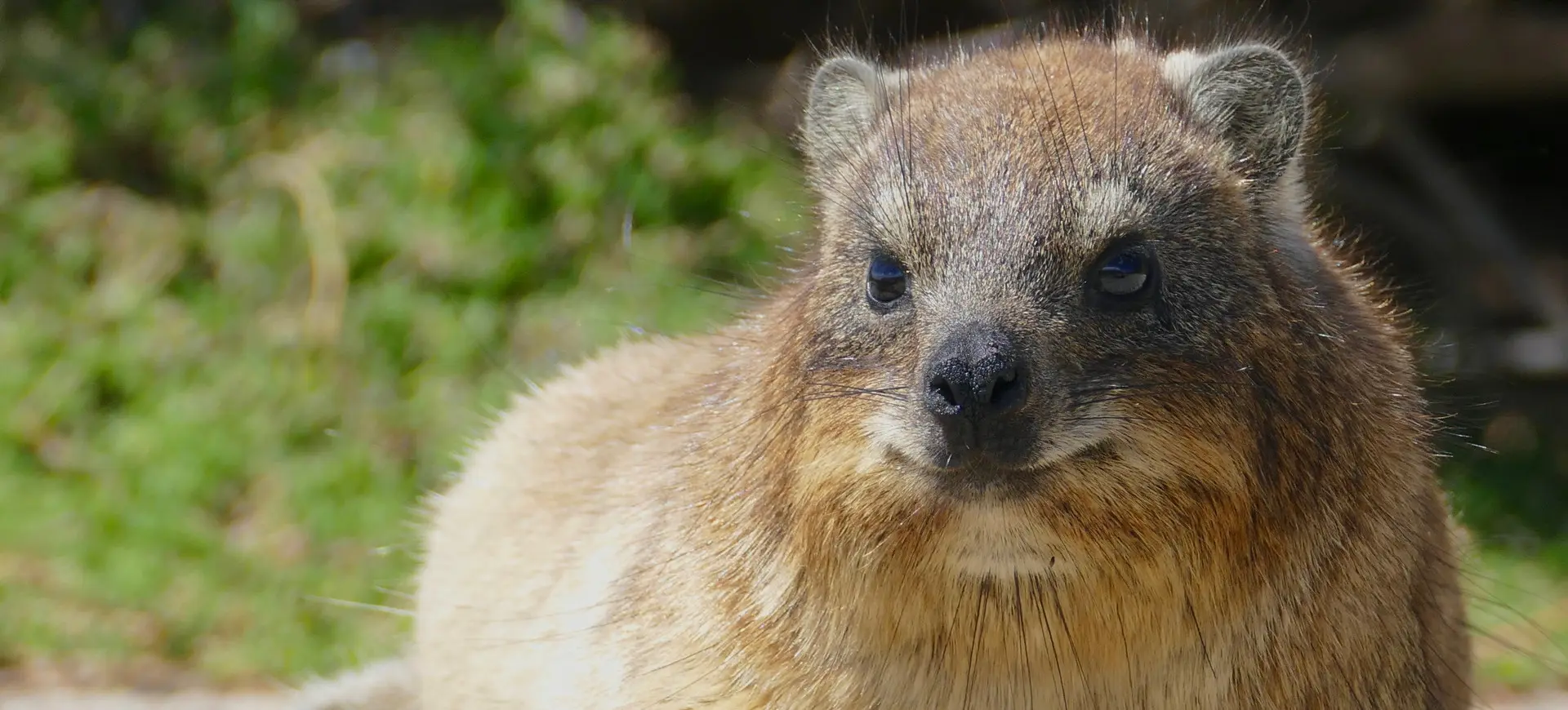– Understanding the Rock Hyrax: Physical Characteristics and Behavior
– The Ecological Role and Habitat of the Rock Hyrax
– The Significance of Rock Hyraxes in Research and Conservation
– Managing Rock Hyraxes in Zoos for Conservation and Education
– Challenges Faced by Rock Hyraxes and Conservation Efforts
Understanding the Rock Hyrax: Physical Characteristics and Behavior
Rock hyraxes, often mistaken for rodents due to their appearance, are fascinating creatures that share a surprising evolutionary link with elephants. At first glance, this connection seems improbable due to the considerable size difference; however, closer examination of their teeth, skull structure, and genetic makeup reveals this unexpected relationship. Rock hyraxes are relatively small, with adults typically reaching lengths of about 50 centimeters and weighing up to 5 kg. They feature a stout body, short tail, and rounded ears. Their fur ranges from brown to gray, helping them blend into their rocky environments.
Behavior-wise, rock hyraxes are known for their complex social structures. They live in groups that can number up to 80 individuals, exhibiting a fascinating hierarchy. Communication is a vital aspect of their social life. They utilize a wide range of sounds, from grunts and wails to snorts and screams, to interact with each other. This vocal communication plays an essential role in maintaining the cohesion and hierarchy of the group.
The Ecological Role and Habitat of the Rock Hyrax
Rock hyraxes prefer rocky terrains where they can easily hide from predators. These animals are primarily found in Africa and the Middle East, inhabiting cliffs, rocky outcrops, and boulders in savannahs and mountainous areas. Their ability to live in such terrains is partly due to their specialized feet. The bottom of each foot has a large, moist pad that becomes tacky when wet, allowing them to easily grip smooth surfaces and climb steep rocks.
In the ecosystem, rock hyraxes play a significant role. They are a key food source for predators, including leopards, eagles, and hyenas. Furthermore, their droppings contribute to the formation of a unique microhabitat. Over time, hyrax urine and feces accumulate to form hyraceum, which supports a distinctive community of plants and insects. This demonstrates the rock hyrax’s critical role in their ecosystem, contributing to biodiversity in their habitats.
The Significance of Rock Hyraxes in Research and Conservation
Rock hyraxes are particularly interesting to researchers. Their close evolutionary ties with elephants have made them a subject of study in understanding evolutionary processes and genetic links between different species within the same lineage. Moreover, studying their social structures and communication patterns provides insights into early mammals‘ behavior and social organization.
In terms of conservation, rock hyraxes face various threats, including habitat destruction and hunting, for their meat and fur in some regions. Highlighting their ecological importance and evolutionary uniqueness can help in rallying conservation efforts. These efforts aim to mitigate threats and preserve their natural habitats, ensuring their survival for future generations to marvel at and learn from.
Managing Rock Hyraxes in Zoos for Conservation and Education
Zoos play a vital role in rock hyrax conservation and education. In a controlled environment, they can be closely studied, which aids in better understanding their needs and behavior. This information can be crucial for their conservation in the wild. Moreover, breeding programs in zoos can help increase their numbers, especially for populations that are under threat.
Educationally, zoos allow the public to learn about these intriguing animals. Visitors can discover the fascinating world of rock hyraxes through interactive exhibits and educational programs, including their behavior, biology, and conservation status. This knowledge stimulates interest and support for conservation efforts, showcasing how zoos contribute significantly to preserving biodiversity.
### Challenges Faced by Rock Hyraxes and Conservation Efforts
Despite their adaptability, rock hyraxes face numerous challenges. Habitat loss due to human activities such as farming, construction, and quarrying poses a significant threat. Furthermore, in some areas, they are hunted for their meat and fur, which further endangers their populations. Climate change also introduces additional stress, potentially altering their habitats and affecting their survival.
Conservation efforts are crucial in addressing these challenges. Protecting habitats, enforcing hunting regulations, and conducting research are key strategies. These efforts require collaboration between governments, conservation organizations, and communities. Education and awareness campaigns can also play a critical role in fostering a conservation ethic among the public, highlighting the importance of rock hyraxes and the need to protect them.
Rock hyraxes are more than just small, intriguing animals; they are an essential part of their ecosystem and have a unique place in the evolutionary story of mammals. Understanding their role, addressing the threats they face, and taking action to conserve them are vital for preserving the natural world’s diversity and complexity. Through combined efforts in research, zoo management, and conservation, we can ensure that future generations will continue to learn from and be inspired by the fascinating rock hyrax.


